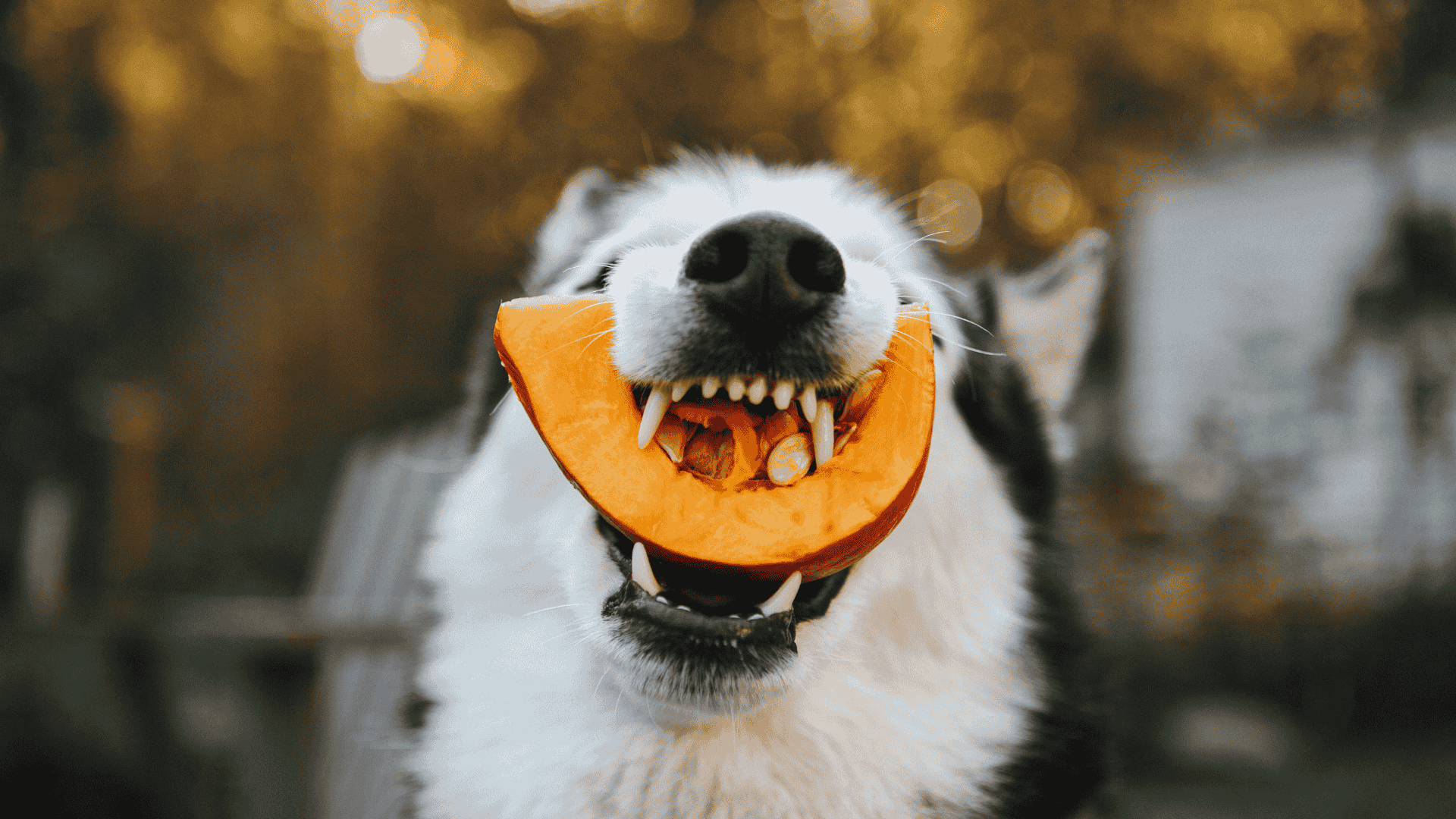Pumpkin Season: Nature’s Gift for Your Dog’s Gut and Beyond
Cooler temperatures are in the air, the leaves are starting to change, and pumpkin patches are popping up everywhere—it’s the perfect time to talk about pumpkin for our pets.
Pumpkin is one of those simple, nourishing foods that can do a lot for dogs (and cats) when used right. It can soothe sensitive stomachs, help regulate digestion, and add valuable vitamins, minerals, and antioxidants to the diet—all in one vibrant orange package.
The Digestive Benefits
Pumpkin is rich in soluble fiber, which helps balance the digestive tract by slowing things down during diarrhea and speeding things up during constipation. It’s truly one of nature’s best regulators. By supporting the good bacteria in your pet’s intestines and discouraging the overgrowth of bad bacteria, pumpkin can help promote a healthier gut ecosystem overall.
If your pet is experiencing loose stool or constipation, the general rule of thumb is about 1 teaspoon of pumpkin per 10 pounds of body weight, mixed into food once or twice daily.
Nutrient Powerhouse
Pumpkin is packed with beneficial compounds including vitamin C, zeaxanthin, lutein, and beta-carotene—all powerful antioxidants that support immune health and eye health.
Vitamin C also plays a key role in immune system function, helping your pet combat disease and inflammation while scavenging free radicals that contribute to aging and even cancer.
The Seeds: Small but Mighty
Don’t toss those seeds! Pumpkin seeds are low in fat and rich in protein, making them a great addition in small amounts. They contain natural compounds such as cucurbitin, cucurbitacin B, and curcurmosin, which are known for their potential antiparasitic properties. A 2020 study in the International Journal of Molecular Sciences highlighted these natural effects.
If you want to use pumpkin seeds as a gentle, supportive tool, make sure they’re raw, organic seeds—not salted, roasted, or seasoned like the ones humans snack on. Rinse them, dry them thoroughly, and crush or grind them into a fine powder.
A general guideline is ½ teaspoon of pumpkin seed powder per 20 pounds of body weight, mixed with food once or twice daily. This can support the body’s natural ability to help remove intestinal parasites.
However, if your dog has an intestinal parasitic infection, you must consult your veterinarian for proper treatment. Pumpkin seeds should never be relied on as the only remedy.
Feed It Right
Always feed 100% plain, pure pumpkin—steamed or gently cooked. Avoid canned pumpkin pie filling, puddings, or anything sweetened, as these contain sugars and spices that aren’t safe for pets.
You can feed pumpkin raw or cooked, but most dogs prefer it cooked because it’s easier to digest. Moderation is key—treats and toppers like this should make up no more than 10% of your pet’s daily calories.
Stock Up Naturally
Now is the perfect time to head to your local pumpkin patch and pick up an organic pumpkin (look for one with seeds—avoid seedless varieties, which are often heavily hybridized).
A little tidbit worth knowing:
Seedless pumpkins aren’t technically GMO like corn or soy, but they’ve been so heavily crossbred and selectively bred to produce fewer or no seeds that they’re far from the real thing. When a pumpkin has no seeds, it’s been manipulated for convenience and looks—not nutrition. For the best quality and nutrient density, always choose organic, heirloom, or sugar (pie) pumpkins with seeds intact. That’s what “real pumpkin” truly means.
Chop it up, steam or gently cook it, then freeze portions in small containers. You’ll have pure pumpkin on hand all year round without having to rely on overpriced canned versions. You can use it mixed into food for fiber, as a food topper, or add it to your dog’s favorite cookie recipe and bake it! There are so many ways for your dog to enjoy the benefits of pumpkin. And if your cat likes it—cats can benefit from a little extra fiber, too, so feel free to share.
A Note for Dogs with Certain Conditions
If your dog has cancer, you may want to use pumpkin more conservatively. Even though pumpkin is lower in sugar than sweet potato, it still contains natural carbohydrates. Use it in moderation, or talk to your integrative or holistic veterinarian about how much is appropriate for your individual dog. You can also explore alternative fiber sources such as psyllium husk or dark green leafy vegetables.
For most dogs, pumpkin is a healthy addition to the diet—but when there’s cancer in the picture, it’s best to stay mindful and intentional with every carbohydrate (and sugar) source.
A Note for Senior Dogs
I especially love pumpkin for older dogs if they tolerate it because of its gentle fiber, antioxidants, and eye-supporting nutrients. As our dogs age, their digestive systems and eyes can use a little extra support—and pumpkin is one of the simplest, cleanest foods to help with both.
Pumpkin is a reminder that nature gives us tools for wellness right in front of us—if we know how to use them.

